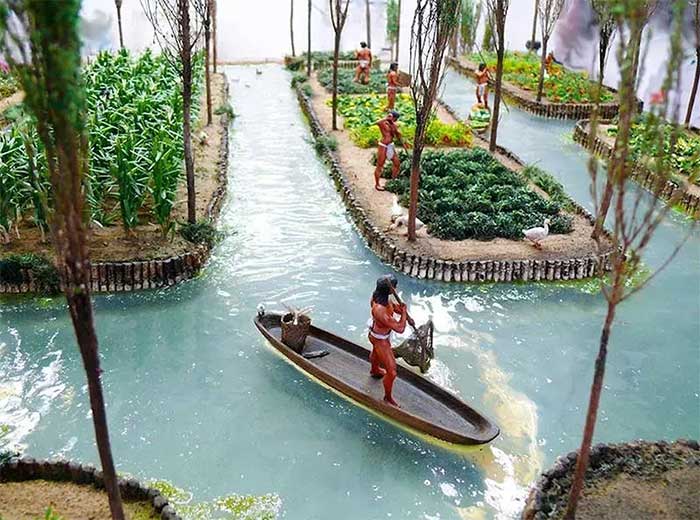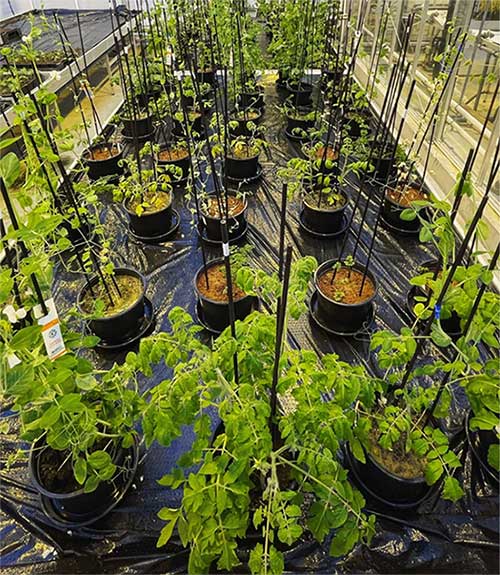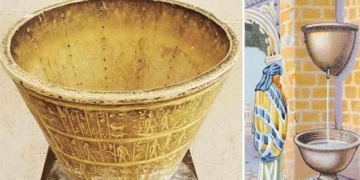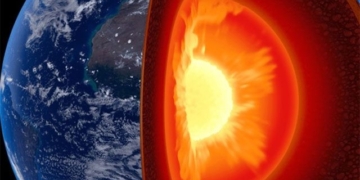An ancient farming method used by the farmers of the ancient Maya civilization could lay the foundation for agriculture on Mars.
The soil on Mars is significantly different from that on Earth. Notably, it lacks many essential nutrients while containing high levels of perchlorate—a toxic and highly alkaline chemical.
These factors make Martian soil extremely harsh for most plant species.
Fortunately, an ancient farming technique developed by the farmers of the ancient Maya civilization may provide a basis for agriculture on Mars.
Intercropping
This approach is known as intercropping, and it is still practiced in many areas around the world, requiring the cultivation of 2 to 3 different crop types simultaneously.
This strategy offers advantages as it produces plants with complementary traits, allowing them to survive despite harsh weather and soil conditions.

The ancient Maya farming method opens up potential for cultivation on Mars (Image: Getty).
Applying this method, researchers at Wageningen University and Research in the Netherlands created a greenhouse model to simulate intercropping processes on Martian soil.
To provide more visual results, the researchers added microorganisms and beneficial nutrients. They also adjusted the gases, temperature, and humidity in the greenhouse to accurately replicate Martian conditions.
From their experiments, they found that intercropping could indeed be a method to optimize food production if applied on the Red Planet.
Tomatoes Suited for Martian Soil
Notably, in the study, certain crops, such as cherry tomatoes, even showed better growth when this intercropping method was applied. Other potential crops include peas and carrots.
However, tomatoes, especially cherry tomatoes, proved to be well-suited for the environmental conditions on Mars, yielding double the production compared to monoculture methods on the same type of soil.
Tomato plants also exhibited encouraging traits such as early flowering, rapid growth, high fruit yield per plant, and thicker stems.
The research team believes that tomatoes grow better due to intercropping with legumes, which can fix nitrogen from the air with the help of symbiotic bacteria known as rhizobia.

New farming method provides advantages for various crops in harsh soil and environmental conditions (Image: Research Team).
Rebeca Gonçalves, a space biologist, emphasized that this technique is effective for certain crops and paves the way for an optimized agricultural system in the Martian environment.
However, Gonçalves noted that since this is the first application of intercropping techniques in space agriculture, we do not truly know what will happen under actual conditions.
“We can adjust the experimental conditions until we find the optimal system, with more species and varying species ratios,” the expert stated.
NASA Aims to “Colonize” Mars by 2030
According to Greg Williams, Deputy Administrator of NASA, humans will begin to ramp up activities on Mars starting in 2030, creating habitats for astronauts for scientific research and long-term settlement.
Starting in 2030, spacecraft will begin transporting astronauts from the Deep Space Gateway (DSG) orbiting the Moon to Mars.
NASA’s mission to send humans to Mars in 2030 is seen as a significant leap in space exploration, but it also presents technological and logistical challenges.
There, shortening the travel time and meeting basic living conditions on Mars are among the most significant puzzles that need solving.
If everything goes according to plan, we can expect that the Red Planet will offer humanity a “completely new life”, with new landscapes, new ways of living, and a new future.




















































